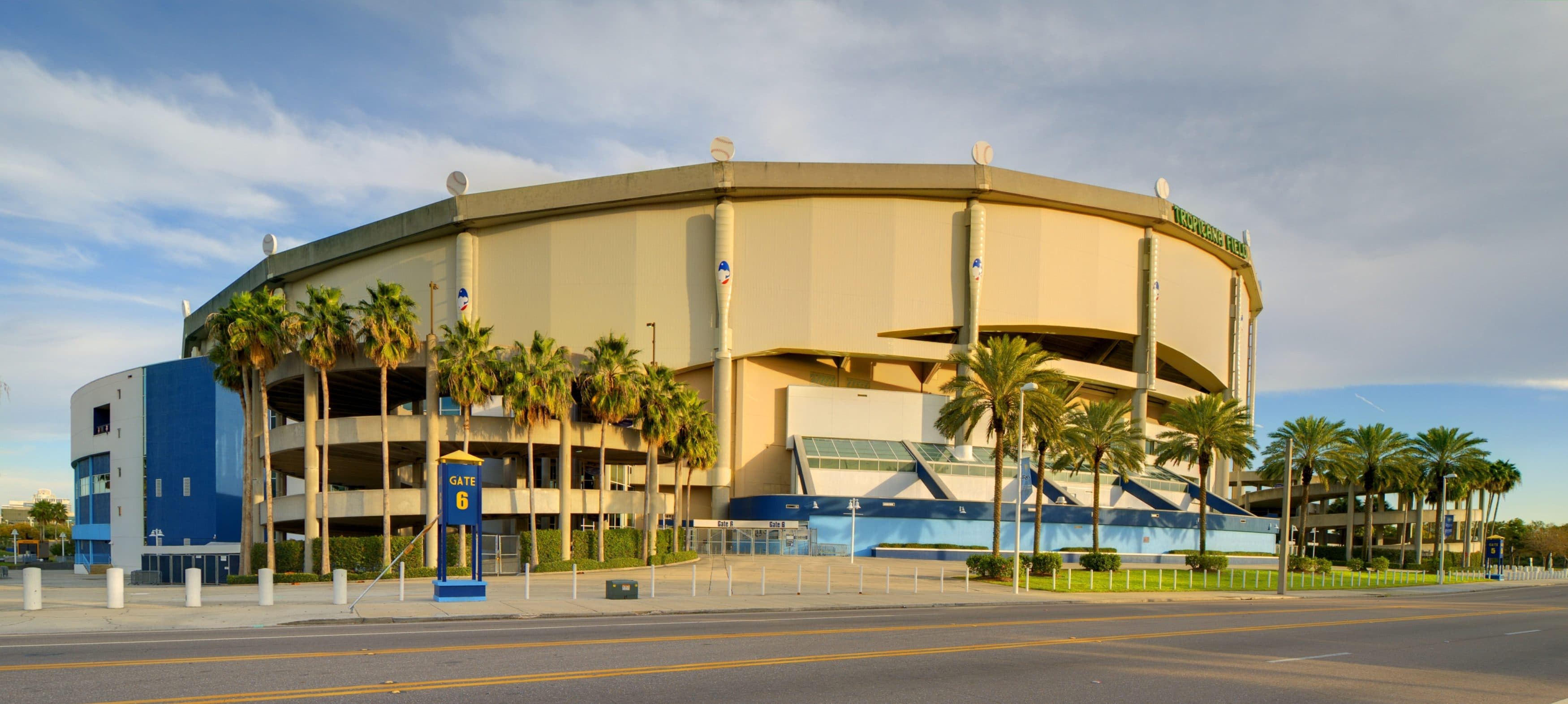
The proposal to have the Tampa Bay Rays to play half of their season in Montreal starting in 2024 is unworthy from someone as smart as owner Stu Sternberg. It’s like if your spouse of more than 20 years says it’s time to see other people, but we can still be friends.
Um, no, we can’t. It’s not workable.
I don’t blame the more excitable among us for believing this is the first step to the Rays saying goodbye for good. We can’t rule that out. But no one is taking this half in-half out base-bull seriously.
They’re either here, or there, and there is no in-between.
I believe they’re here, and history backs me up.
Start with the textbook threat of moving the team. It’s baseball 101. Playing nice hasn’t gotten a Tampa Bay stadium out of the starting blocks, but threats can get a community’s attention.
A threat had to happen.
I think we’ve been over this ground before, but to refresh everyone’s memory, Tropicana Field is in the worst location possible for a stadium. And if St. Pete Mayor Rick Kriseman continues to argue that it is the best place to build a new playpen for the Rays, I guess everyone should learn to speak French.
On one front, though, Kriseman did everyone a favor. His rapid response that the city will not agree to this bizarre arrangement with Montreal is good long-range news. It should put this multinational lunacy in the rearview mirror where it belongs so serious people can work on solving this problem.
If you’ve been around these parts for a while, this dance should look familiar. I covered the buildup to the expansion Tampa Bay Devil Rays for the Tampa Tribune, and the story never seemed to change.
It always started with news that (fill-in-the-blank) market won’t support its team, so it should move to St. Petersburg and its empty domed stadium.
Longtime residents remember the drama with the Chicago White Sox’s near-move to St. Pete. In 1988, while this played out, the team drew 1.1 million fans to the South side of Chicago. People said that two baseball teams in Chicago were one too many, and the White Sox were doomed.
At least they were until they got a new stadium.
Sound familiar?
You might remember that the Minnesota Twins were trapped in a failing market. That’s what people said, anyway. They attracted less than 1 million fans for five out of six years while Tampa’s Frank Morsani was trying to buy and move the team to a privately built stadium next to what now is Raymond James Stadium.
The threat worked. A well-funded local owner bought the Twins, kept them in Minneapolis, and turned the franchise around.
Former Seattle Mariners owner Jeff Smulyan desperately wanted to move his team to St. Pete. He routinely trashed Seattle as a market that wouldn’t support baseball. But a clause in the stadium lease gave local leaders time to find a new owner, and Smulyan had to give up the dream of moving to Florida.
Oh, and the Seattle franchise thrived with a new owner and stadium.
We can’t forget the San Francisco Giants, either. They were headed to St. Pete in 1992 until local ownership emerged to deny Tampa Bay once again.
Of course, the dynamics have changed greatly since those days. Stadiums now carry a price tag of about $1 billion, and governments aren’t eager to pick up much, if any, of the cost. If leaders in Montreal can promise a new ballpark while nothing happens here, well, the Rays are gone.
A lot of people believe that’s what Sternberg wants, but I don’t agree. He wants a modern stadium in Tampa because it’s the center of the market. I don’t believe they’ll settle for anything else.
If it happens, they’ll remain in Tampa Bay. If not, they’ll go to Montreal.
But a split-season with the Rays and Montreal? Sure, it’s ridiculous, but something has to give. And when in doubt, threaten to move.




One comment
TED
June 24, 2019 at 11:34 am
Professional sports team owners and their leagues should pay for their own damned arenas and stadiums in full. Billionaires just looking for private profits while the public picks up the expenses! It’s Bu**sh**!
Comments are closed.